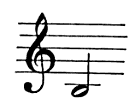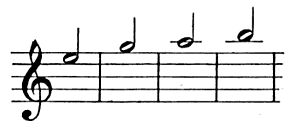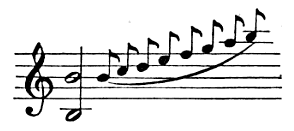In the summarized proceedings of the September 1884 meeting of the American Association for the Advancement of Science, Trinity College chemist H. Carrington Bolton and Columbia College geologist Alexis A. Julien reported on the “musical sand” at Manchester-by-the-Sea, Mass.:
“The character of the sounds obtained by friction on the beach is decidedly musical and we have been able to indicate the exact notes on a musical staff. The shrillness and lowness of note depend chiefly on the quantity of sand disturbed; by plunging both hands into the sand and bringing them together quickly with a swoop a large quantity of the sand vibrates and we hear a tone of which the dominant note is:”

“By stroking the sand nearer the surface and with less force very high notes are heard somewhat confused. The following were heard at different times.”

“By rubbing firmly and briskly a double handful of the sand several notes on a rising scale are heard, the notes rising as the quantity of sand between the hands diminishes. We do not hear each note of the scale separately, but the ear receives an impression something like that formed by sliding a finger up a violin string at the same time that the bow is drawn.”

“The range is very remarkable and decided.”
Bolton and Julien found that “sonorous sand” was “of very common occurrence and widely distributed” — 65 of the 85 U.S. life-saving stations with which they corresponded reported that they knew of such sand. “The number is constantly increasing as the reports from keepers of life saving stations arrive.”
